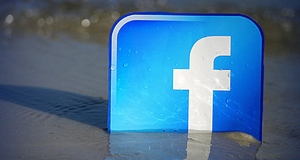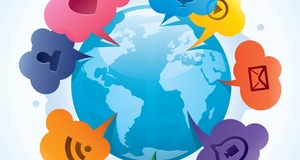From Elon Journal of Undergraduate Research in Communications VOL. 3 NO. 2Coupons of the 21st Century: The Golden Age of The Daily Deal IndustryIV. FindingsGroupon Case StudyGroupon's heavy subscriber base—surpassing 50 million according to recent news reports (Streitfeld, 2011) —is essentially an email distribution list segmented by geographical boundaries. Email is a cheap and successful mechanism to reach subscribers in an easy and timely fashion. Email and social media sites allow Groupon to target the maximum relevant geographic area when promoting a local merchant. Utpal M. Dholaki and Kimes (2011) examined the insights of a diverse sample of 973 respondents. Their results show that consumers are more willing to buy deals that appeal to them through creative images and languages. Also, it indicates that despite previous worries and anxieties, there is no evidence of daily deal fatigue. Their survey-based study found that the 'heaviest' daily deal users were the most enthusiastic about daily deal sites. This indicates that Groupon established itself as a credible business and has formed strong relationships between customers and the company. They [heavy users] indicate the greatest interest in checking their email for deal offers everyday, have little trouble in using the deals before they expire, believe that daily deals help them save money on things they would have purchased anyway, and say they have integrated these deals into their usual shopping behavior. (Dholakia & Kimes, 2011, p. 1) In terms of demographic information, Dholakia and Kimes' research indicates that the majority of Groupon subscribers lived in urban areas. Additionally, most of the users were female (p. 5). Although promotions can appeal to both men and women, Groupon often speaks to women by focusing promotions on the health, fitness and beauty markets. Finally, Dholakia and Kimes' (2011) analyzed subscribers' awareness, usage, and perception of various daily deal websites. According to their results (2011), awareness levels for Groupon were the highest with 93.6%, followed by Restaurant.com (83.1&), and LivingSocial (80.2%) (p. 16). Similarly, Groupon had the largest proportion of users (56.6%), followed by Restaurant.com (46.1%), and LivingSocial (45.8%). The participants in this study were asked which of the daily deal sites was their favorite, the website with the largest "heart share." The results showed Groupon had the highest heart share with 43.3% of the respondents indicating Groupon as their favorite daily deal site. Following Groupon, Restaurant.com has16.2% heart share and LivingSocial has only 7.3%. The conclusion of the research showed: Where the two major daily deal sites are concerned, these numbers are positive from the standpoint of Groupon, indicating its relative brand strength, and may be a cause of concern for LivingSocial given the relatively few daily deal users who consider it as their favorite site. (Dholakia & Kimes, 2011, p. 17) Thus, these results indicate Groupon as the daily deal company with the highest brand awareness, most subscribers, and highest heart share. Arabshahi performed an analysis on Groupon's business model in December of 2010. According to his research (2010), "Each deal region—usually a densely populated urban best described as an 'expanded local'—is large enough to cover any subscriber with the potential to participate" (p. 1). His research asserts that Groupon and LivingSocial are mediated platforms that connect people seeking bargains with merchants willing to provide them. He believes the harvesting of the maximum geographic area maximizes Groupon's ability to generate customers for local merchants. Additionally, Arabshahi noted that an integral part of every Groupon deal is the actually message embedded in the deal email, tweet, or Facebook post. The creative and humorous messages, prepared by Groupon's expert writers, aims to highlight the attributes of the offered product or service. Many attribute their use of unique language to generate emotion as one of their key tactics for success. For example, a recent article from The New York Times, asserts, "Groupon's breakthrough sprang not just from the deals offered but also from an ingredient that was both unlikely and ephemeral: words" (Streitfeld, 2011, p. 1). Borrowing tools and terms from journalism, Groupon softened the traditional heavy content of advertising and added banter, attitude, playfulness, emotion and humor to relate to their subscribers on a lighter level. The primary goal of their messages is to spark excitement for the deal and coax subscribers into purchasing the offered deal. Groupon's brand of subtle humor is often referred to as the "Groupon Voice" (Streitfeld, 2011). For example, currently, Groupon is offering a deal with Cary Yoga and Kickboxing in Cary, N.C. This deal is available to all subscribers but is sent specifically to subscribers that live in the Cary, Durham, Raleigh or greater Triangle region. The message on this advertisement is a clear example of how Groupon's uniquely written copy. Perspiration gets mischievous when cooped up inside the body, acting out by drenching armpits on first dates and disguising itself as tears during job interviews. Release disgruntled body water with this Groupon to Cary Yoga and Kickboxing. (Groupon, 2012, p. 1) This artistically scripted message proves Groupon relies on poetic and humorous word choice as an attempt to appeal to subscribers and to persuade them to purchase their promotional deals. Some of the company's rules for their written content is that the passive voice must be avoided at all times and pop culture references are verboten. According to The New York Times, (2011), "A write-up for a teeth-whitening service said it was equivalent to being punched by God twice. Angry letters followed" (p. 3). Groupon's "comedy writers," as they are referred to throughout the company, sit together and often share office space at the company's headquarters in Chicago. Dholakia and Kimes (2011) also focused on the typical behaviors of Groupon subscribers and their reliance on social media sites. The study indicates that heavy deal users, those who have purchased more than 11 daily deals, are interested in checking their email, Facebook, or Twitter account for Groupon's daily deal promotions. All three-user groups, novice users, users and heavy users, indicated they actively check social media sites for daily deal updates. However, the study found most users rely more heavily on automatic email subscriptions to purchase daily deals rather than Facebook and Twitter. Additionally, the researchers noted, "It appears that the 'social' aspect of daily deals is not as important to our sample respondents as is the personal aspect of looking for and receiving a good deal" (Dholakia & Kimes, 2011, p. 7). Heavy daily-deal users indicated email as their main means of communication with Groupon. The respondents in the survey were not as enthusiastic as sharing promotions through social networking sites like Facebook and Twitter. The results indicated that Groupon subscribers are more likely to purchase deals when received via email notifications. In terms of additional social media promotions, Groupon offered $10 in "Groupon Bucks" whenever a consumer referred a friend to Groupon through email links, Facebook or Twitter. With a heavy subscriber base of over 50 million, Groupon uses social media tools such as Twitter and Facebook to engage in conversations with consumers, advertise promotions to followers, and keep up on the latest trends of the industry. Currently, Groupon has 445,313 likes on their international Facebook page, 57,723 followers on their Twitter page, 480,000 monthly users on the international Groupon application (Patel, 2011). As an example of a local site, the Groupon Facebook page for Raleigh/Durham has 3,309 likes. Although these numbers are high, the potential for continued growth is evident based on their market of more than 50 million subscribers. The engagement on both social media sites, however, is very interactive. Twitter tends to be more interactive in terms of consumer relations as they give specific replies to most, if not all, tweets from customers. Facebook, used more as a tool to advertise and post daily deals, interacts with fans as well, however, not as often or as heavily as with followers on Twitter. Posts on Facebook are often done on a daily basis while Twitter posts tend to be on an hourly or more frequent basis. However, on Facebook, there is constant access to the Groupon application, which allows individuals to download, view, and purchase daily promotions from their Smartphone. Groupon's reliance on social media is highly compared to many other international companies; however, there is clear room for improvement in the future. The Groupon case study indicates that consumers use social media sites to learn about daily deal; however, they mostly rely on automatic daily emails for purchasing their deals. The majority of subscribers use Facebook and Twitter solely as a means of communication with the company. Many customers tweet their feedback to the national Groupon Twitter as well as the Groupon Twitter of their city or region. With social properties in over 500 cities around the world, Groupon actively maintains Facebook and Twitter accounts for nearly all of their market cities. Groupon uses Facebook and Twitter to post deals, initiate conversation with consumers, and post relevant information, tips, or pointers. Their reliance on Twitter and Facebook helps the company build and maintain close customer relations and strong brand awareness. Additionally, the case study proved that content in all advertisements and promotions is crucial to the success of the company. Creative and humorous messages are created for each deal to sway and persuade subscribers to purchase the promotions. Groupon hires expert and experienced writers to use unique language to appeal to the emotions of each subscriber. This persuasion tactic and technique speaks directly to Aristotle's belief of the power of appeal to ethos, logos, and pathos in successful communication. Finally, the case study indicated that the 'heaviest' or most active daily-deal users were the most enthusiastic about daily deal sites. LivingSocial Case StudyNeither Groupon nor LivingSocial require any up-front money investment or subscription fee. However, the majority of Groupon and LivingSocial users are in search of a bargain or daily promotion. Like Groupon, a subscriber is able to access LivingSocial through an email address, Facebook login, Twitter application or mobile device. LivingSocial offers several daily deals in a wide array of categories to accommodate many different users. After analyzing the user demographics, advertising content, and social media usage of Groupon subscribers, this case study examines the users of LivingSocial and highlights their common characteristics, persuasion tactics and reliance on language, and social media practices. A Nielsen Co. survey, conducted in April 2011, claims that individuals purchasing coupons from LivingSocial tended to be more successful, younger and smarter than Groupon customers (Flinn, 2011). The results indicate LivingSocial users are 49% more likely than the average American to make at least $150,000 annually, compared with 30% for Groupon. Furthermore, LivingSocial users are more likely to have college graduate degrees and be younger than 35 years old. Approximately one third of LivingSocial buyers are in the 21-to-34-age range. Also, the study claimed 46 percent of LivingSocial users had attended or previously graduated from college, compared with 39 percent for Groupon (Flinn, 2011). Although these numbers are pretty similar, it is very interesting to note that LivingSocial users tend to be more profitable, educated, and younger compared to Groupon subscribers. Furthermore, based on demographic-driven research, LivingSocial is stronger in the Eastern region of the United States, while Groupon tends to be more successful in the Midwest and Pacific regions (Flinn, 2011). Although LivingSocial is not directly known for its use of humor in its advertising content, as Groupon is, the company does rely on subtle humor and emotional language to appeal to consumers. For example, the opening line explaining a deal offering ten jazzercise classes at a Chapel Hill gym read, "Obsessively checking Facebook to untag unflattering pics posted by your friends is hardly the right was to procrastinate. Swap sweating the small stuff for sweating the pounds off at Jazzercise Fitness Center of Chapel Hill" (LivingSocial, 2012, p. 1). The description of this deal is a strong example of the light and airy language LivingSocial writers use to reach consumers on a friendly and comfortable level. The advertisement used words such as 'untag' and 'pics' as an attempt to communicate with the consumer on a relatable level. Similar to Groupon, the description for each daily deal is carefully and artistically scripted to appeal to the emotions of each subscriber. LivingSocial is relatively active on social media sites such as Facebook and Twitter. Currently, the LivingSocial Facebook page has 1,278,076 likes (compared to Groupon's 445,313), has 2,300,000 monthly users for the LivingSocial application (Groupon's is 480,000), and 132,355 followers on Twitter (compared to Groupon's 57,723 followers). Obviously these numbers prove LivingSocial, as an international company, has a much larger base of followers and fans on social media. However, this analysis does not account for the fact that Groupon has additional Facebook and Twitter accounts for nearly all of the participating cities. Therefore, many subscribers may solely follow or "like" the account for their particular geographic region for Groupon. LivingSocial, on the other hand, only has a handful of Twitter and Facebook accounts for participating cities. Instead, they rely more on building awareness at the international brand level. LivingSocial utilizes social media sites in a unique fashion. According to its website, a consumer has the option of sharing their purchased deal via email, Twitter or Facebook to friends, family members and followers. If three people buy the deal through the link, the deal is free to the original purchaser. This exclusive tactic encourages consumers to spread the word about specific deals and promotions. It also has the potential to raise brand awareness and positive association with the company if the consumer receives a free deal. As the second highest grossing and most successful daily deal site in the world (behind Groupon), LivingSocial CEO, Tim O'Shaughnessy must attempt to keep pace with the company's largest competition and must work to plot his own course for setting his company apart. A key aspect in O'Shaughnessy's plan is to start moving beyond promotions for mom-and-pop businesses. For example, in September 2011, LivingSocial offered $20 worth of goods at Whole Foods for $10. According to MacMillan (2011) from Bloomsberg Businessweek, approximately 80 people bought the deal per every one-second, marking it the company's fastest-selling coupon. Approximately 100,000 new subscribers joined LivingSocial to get access to this specific deal. Similarly, in January 2011, LivingSocial offered $20 Amazon gift card for $10, resulting in a sale of over 1.4 million vouchers and an incredible amount of media attention. Although offering national deals means LivingSocial paying more than usual out of pocket, subscribers are more likely to purchase deals offered at a national level (MacMillian, 2011). According to another research conducted by Steiner (2010) in an article published in Forbes magazine, "Chief Executive Timothy O'Shaughnessy thought LivingSocial has a long-term edge on Groupon and other competitors because it puts a handful of full-time salesperson in each of the cities the company has relationships and active promotions with" (p. 2). Furthermore, a key study regarding group deals (2011) found deals in LivingSocial tended to grow faster than Groupon in the first few hours the deals are offered. The research claimed that a possible reason for this is due to the different incentives LivingSocial uses to promote each deal (Ye, Wang, Aperjis, Huberman & Sandholm, 2011). The case study conducted on LivingSocial indicates continued growth for both the company and the online coupon market. Although still working to catch up with the overwhelming success of its number one competitor, Groupon, LivingSocial is constantly increasing merchant base, brand awareness, loyalty among subscribers, unique advertising content, and reliance on social media sites. Over one million LivingSocial subscribers have purchased three or more deals. Customers, therefore, are relatively happy with the results.Continued on Next Page » Suggested Reading from Inquiries Journal
Inquiries Journal provides undergraduate and graduate students around the world a platform for the wide dissemination of academic work over a range of core disciplines. Representing the work of students from hundreds of institutions around the globe, Inquiries Journal's large database of academic articles is completely free. Learn more | Blog | Submit Latest in Business & Communications |

















